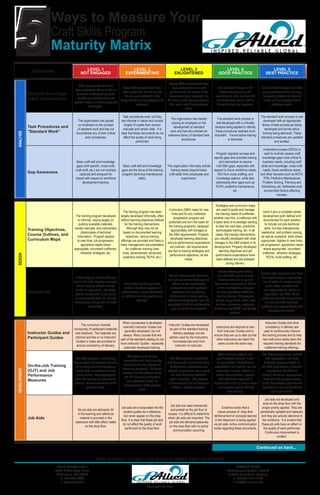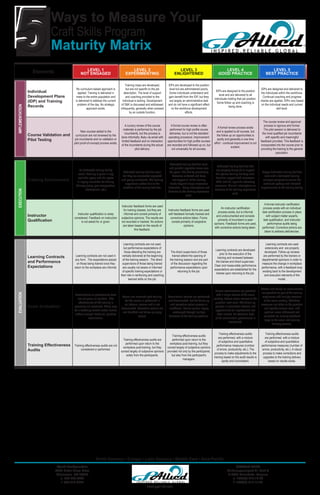The document assesses the maturity levels of skill and knowledge (S&K) programs across various dimensions, including training needs analysis, job performance measures, and instructor qualifications. It outlines a progression from informal training practices to more structured and formalized approaches, highlighting the importance of standard work procedures, individual development plans, and consistent evaluation mechanisms. Overall, it emphasizes the necessity for continuous improvement, effective job aids, and robust training environments to enhance workforce development.

